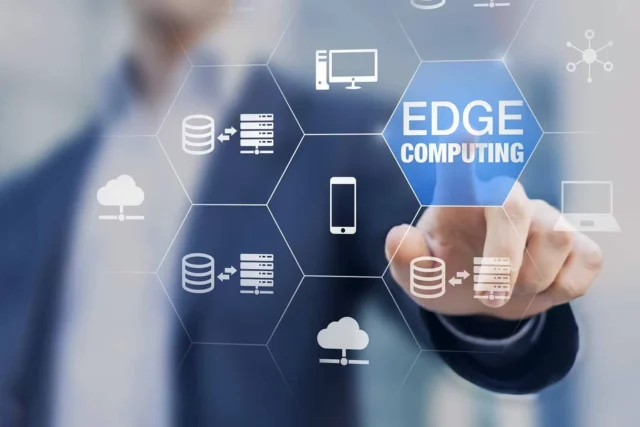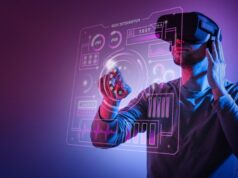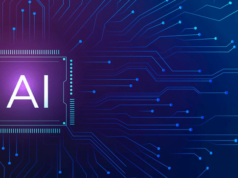Edge Computing: Redefining Data Processing in the IoT Era
Introduction:
Within the exceptional realm of technology, the inescapable integration of (IoT) devices has incited an enormous surge of data. As our general scene develops more interconnected, ordinary approaches to dealing with incorporated data processing wrestle with the imposing undertaking of managing the voluminous and quickly made information from IoT devices. It is within this setting that edge computing arises as a powerful fix, redefining our way to deal with dealing with data management in the IoT time outline. This article intends to destroy the subtleties of edge computing, exploring its applications, benefits, and challenges, and delving into its effect on unambiguous locales like healthcare and manufacturing.
Understanding Edge Computing:
Edge Computing Defined:
At its center, edge computing involves processing data nearer to the wellspring of age, i.e., at the edge of the organization, as opposed to relying on a unified cloud or data focus. This change in outlook tends to idleness concerns, improves real-time processing capacities, and diminishes the strain on network data transmission.
IoT’s Role in Driving Edge Computing:
The flood in IoT devices, ranging from smart home machines to industrial sensors, requires an additional effective data processing structure. Edge computing flawlessly integrates with IoT, creating a symbiotic relationship where edge devices assume a significant part in handling and analyzing the huge datasets delivered by IoT devices.
IoT Architecture and Edge Devices:
IoT Architecture and Edge Devices:
In customary IoT architecture, data is communicated to a focal server for processing. Notwithstanding, edge computing rearranges this responsibility by incorporating edge devices, like switches, passages, and servers, into the organization. These edge devices cycle and channel data locally prior to sending just applicable information to the cloud.
Real-Time Data Processing:
A key advantage intrinsic to edge computing lies in its ability to partake in the processing of real-time data faultlessly. Edge devices break down data instantaneously, enabling faster independent direction and enhancing the general responsiveness of IoT applications. This is particularly vital in situations where timely activities are basic, for example, independent vehicles or basic healthcare monitoring frameworks.
Edge Computing Solutions and Platforms:
Diverse Edge Computing Solutions:
Various edge computing solutions have arisen to take special care of the assorted requirements of various industries. These solutions range from edge servers and entryways to specific equipment intended for specific applications. The adaptability of these solutions permits businesses to fit their edge computing infrastructure to match the particular prerequisites of their IoT organizations.
Role of Edge Computing Platforms:
Edge computing platforms act as the spine for deploying and managing edge applications. These platforms streamline the turn of events, organization, and maintenance of edge applications, offering a durable climate for engineers to make and enhance their solutions.
Applications and Benefits of Edge Computing:
Broad Spectrum of Edge Computing Applications:
The applications of edge computing length different areas, from industrial settings to smart cities. In manufacturing, edge computing improves process proficiency, while in smart cities, it empowers intelligent infrastructure management. Edge computing is additionally making huge inroads into healthcare, transforming patient consideration through remote monitoring and prescient analytics.
Benefits of Edge Computing:
Embracing edge computing yields a bunch of benefits for businesses and associations. These include diminished inertness, increased transfer speed productivity, supported data security, and expanded versatility. The nearness of data processing to its source within the system of edge computing fundamentally decreases the time expected for information to cross among devices and servers, culminating in swifter and more trustworthy execution.
Edge Computing Trends and Use Cases:
Evolving Trends in Edge Computing:
As technology continues to develop, edge computing isn’t static. Emerging trends include the integration of (AI) and machine learning (ML) calculations at the edge, enabling devices to settle on intelligent choices locally without relying on an incorporated cloud for complex processing.
Diverse Use Cases of Edge Computing:
Edge computing’s adaptability is reflected in its wide exhibit of use cases. From prescient maintenance in industrial settings to real-time video analytics in smart cities, edge computing is transforming how data is handled, dissected, and followed up on across different domains.
Industry-Specific Implementations:
Edge Computing in Industry:
Industries are increasingly embracing edge computing to address their one of a kind challenges. In manufacturing, edge computing streamlines creation processes, reducing downtime and improving generally productivity. Essentially, in the healthcare area, edge computing works with far off quiet monitoring and empowers speedier reaction times in crises.
Edge Computing in Smart Cities:
Smart city initiatives depend on the consistent integration of technology to improve metropolitan living. Edge computing assumes a crucial part in the sending of smart city solutions, from intelligent traffic management to productive waste management frameworks. The decentralized idea of edge computing adjusts impeccably with the circulated infrastructure of smart cities.
Challenges and Considerations:
Challenges in Edge Computing Implementation:
In spite of its various benefits, edge computing isn’t without challenges. Security concerns, normalization issues, and the intricacy of managing appropriated edge conditions are a portion of the obstacles that associations should explore. Addressing these challenges is significant to realizing the maximum capacity of edge computing in the IoT period.
Edge Computing Infrastructure:
Building a vigorous edge computing infrastructure requires cautious planning and thought. The determination of edge devices, network solutions, and edge computing platforms should line up with the particular necessities of the intended applications. Versatility and future-proofing are fundamental contemplations to guarantee that the infrastructure can adjust to evolving innovative scenes.
Edge Computing and IoT Security:
As the quantity of associated devices increases, so does the potential assault surface for pernicious entertainers. Securing edge devices and the correspondence between them is foremost. Edge computing introduces a decentralized security model that requires an extensive methodology, encompassing gadget-level security, secure correspondence conventions, and normal updates to relieve weaknesses.
Comparison with Cloud Computing:
Edge Computing vs. Cloud Computing:
An ordinary confusion is that edge computing is an exchange for cloud computing. For any situation, these two principles complete one another. While cloud computing remains the spine for storing and processing enormous volumes of data, edge computing expects the control of handling time-delicate undertakings nearer to the data source. Together, they structure solid areas for a synergistic combination.
Specialized Applications:
Edge Computing in Healthcare:
Healthcare stands to gain monstrously from edge computing. In situations like distant patient monitoring and wearable wellbeing devices, edge computing guarantees that basic data is handled locally, reducing the weight on focal servers and allowing for real-time monitoring and reaction. The integration of edge computing in healthcare is a change in perspective toward customized and responsive patient consideration.
Edge Computing in Manufacturing:
In manufacturing, the improvement of creation processes is a consistent pursuit. Edge computing works with prescient maintenance, quality control, and real-time monitoring of hardware. This minimizes downtime as well as upgrades by and large functional productivity. The integration of edge computing in manufacturing lines up with the Industry 4.0 vision, where smart processing plants influence data for intelligent navigation.
Conclusion:
All in all, edge computing remains as a groundbreaking power in the IoT time, reshaping the scene of data processing. The marriage of edge computing and IoT opens extraordinary potential, enabling real-time insights, upgraded productivity, and further developed navigation. As industries continue to embrace edge computing solutions, the technology will develop, addressing challenges and ushering in additional opportunities. The excursion towards an additional interconnected and intelligent world is directed by the consistent integration of edge computing, bringing us more like a future where data isn’t simply handled yet outfitted to drive innovation and further develop lives.








